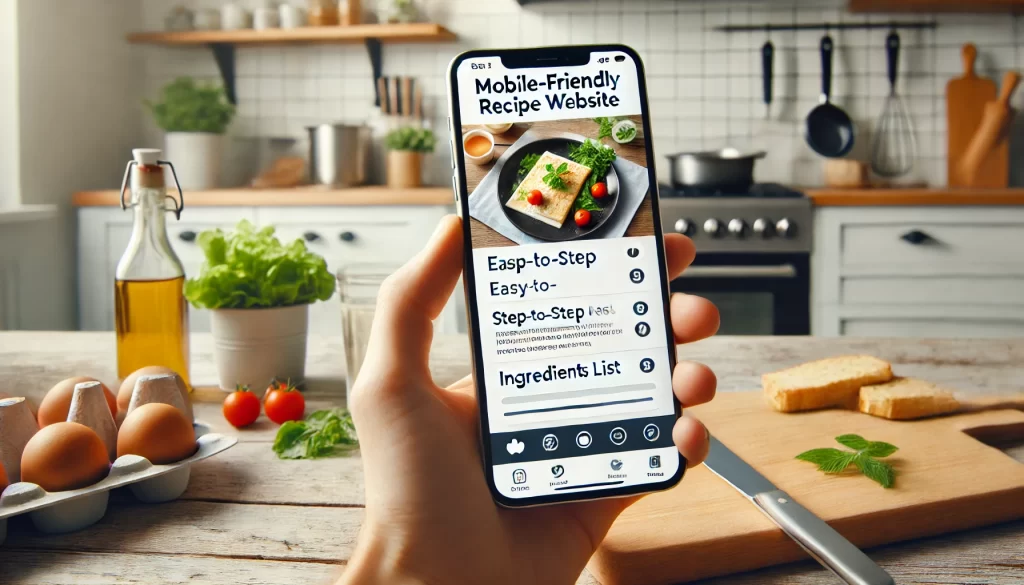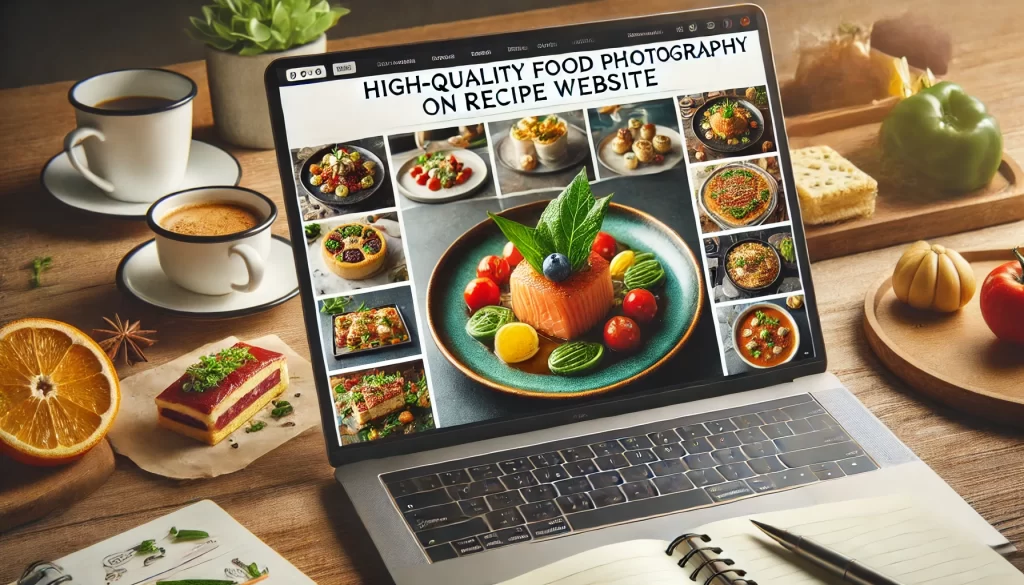Introduction
In today’s digital age, the way we interact with food and recipes has evolved drastically. Gone are the days when finding a recipe meant flipping through cookbooks or relying on basic recipe cards. The internet has opened up a whole new world of culinary exploration, where recipe websites not only provide step-by-step instructions but also allow users to actively engage with the content. Whether you’re looking for websites with interactive tools like ingredient swapping and meal planning, or you’re in the process of designing your recipe website, there’s a wealth of knowledge available to enhance your cooking experience. We’ll dive deep into interactive recipe websites that allow you to engage with your meals in a more personalized way. We’ll also explore some recipe design tips for those who want to create an aesthetically pleasing recipe website or blog of their own. Whether you’re a user looking for a more dynamic cooking experience or a developer aspiring to design a beautiful, functional recipe website, you’ll find valuable insights here.

Interactive Recipe Websites
How to Find Websites with Interactive Tools like Ingredient Swapping and Meal Planning
Interactive recipe websites are changing the way we think about cooking. They offer dynamic features that allow you to engage with recipes on a deeper level. These tools often include things like ingredient substitutions, meal planning, portion control, and even integrated grocery shopping lists. If you’re someone who loves personalizing your cooking experience or managing your meals more efficiently, these tools can be a game-changer.
Ingredient Swapping
One of the most innovative tools available on many interactive recipe websites is ingredient swapping. This feature allows you to substitute one ingredient for another based on your preferences, allergies, or available ingredients. For example, if you’re out of a specific spice or need to avoid dairy, the tool will suggest similar ingredients to ensure your dish turns out just as flavorful.
Some websites even let you specify your dietary restrictions and suggest ingredient swaps that match those preferences. Websites like Yummly and SuperCook offer excellent ingredient-swapping features, helping you make the most out of what’s in your pantry.
Meal Planning
Meal planning is another key feature that’s become increasingly popular among recipe websites. These platforms offer interactive calendars where you can plan your weekly meals, saving you time and stress. You can even integrate your meal plan with grocery lists, ensuring you purchase exactly what you need. Websites such as PlateJoy and Cookpad offer personalized meal planning tools that help you stick to your nutritional goals, from weight loss to gluten-free meals.
By using a meal planning tool, you can create a structured approach to your cooking, making grocery shopping easier and more efficient. The ability to schedule meals ahead of time helps you stay organized and eliminates the need for last-minute scrambling in the kitchen.
Nutritional Information and Calorie Tracking
Many interactive recipe websites take things a step further by offering nutritional breakdowns of each recipe. This feature is especially valuable for those managing specific health conditions or following strict diets. Websites like MyFitnessPal and EatingWell offer detailed calorie and macronutrient breakdowns of each recipe. Some even let you adjust portions and instantly update the nutritional information based on changes you make to the recipe.
These tools are not only helpful for individuals trying to track their daily intake but also for those looking to improve their eating habits. By having access to these tools, users are more likely to make informed decisions about the food they prepare.
Interactive Cooking Tutorials
Some recipe websites take interactivity a step further by offering cooking tutorials in the form of videos, quizzes, and step-by-step guides. This feature is particularly useful for beginners looking to learn new cooking techniques or for advanced chefs aiming to perfect specific skills. Websites like America’s Test Kitchen and Tasty offer video-based recipes where users can follow along with the instructions, making the cooking process feel more engaging and intuitive.
By incorporating interactive tutorials, these websites offer a hands-on approach that’s both educational and enjoyable. This is perfect for anyone who learns better through visuals and practice rather than just reading instructions.
Suggested Posts:
• Best Recipe Search Engines to Find Recipes
• Best Free and Paid Recipe Websites to Use in 2025
• Guide to Popular Recipe Websites

Recipe Design Tips for Creating an Aesthetically Pleasing Website
A Guide to Designing Visually Appealing Recipe Websites
If you’re looking to design your own recipe website, aesthetics play a huge role in user engagement. Whether you’re a food blogger, a chef, or just a cooking enthusiast, creating a visually appealing website is crucial for attracting visitors and keeping them interested in your content. Here’s how you can design a recipe website that’s both functional and beautiful:
1. High-Quality Photography
The visual appeal of your recipe website starts with high-quality food photography. When it comes to food, a well-shot image can make all the difference. Ensure your photos are vibrant, well-lit, and clear. The presentation of your dishes should inspire visitors to try the recipes you share.
Investing in a good camera or hiring a professional photographer is worth the investment. Even simple recipes can be made to look gourmet with the right lighting and presentation. Sites like Minimalist Baker have excellent examples of food photography that are simple yet striking, showcasing the food without being overly complex.
2. Clean, Organized Layout
An important element of an aesthetically pleasing recipe website is a clean and organized layout. Your website should be easy to navigate, with categories that make it simple for users to find what they’re looking for. Grouping recipes into categories such as “Vegan”, “Gluten-Free”, or “Desserts” will make the browsing experience smoother for visitors.
The layout should also highlight essential details such as ingredients, instructions, and cooking time. Avoid clutter and ensure that each section is easy to read. A minimalist approach with a lot of white space tends to work well for recipe websites, as it keeps the focus on the food.
3. Mobile-Friendly Design
With the increasing use of mobile devices for browsing, ensuring that your website is mobile-friendly is essential. A mobile-responsive design ensures that your recipe website looks great and functions smoothly on any device, from smartphones to tablets. Many visitors will access your site while cooking, so it’s important to have an easily readable, accessible design.
Use a responsive theme or template for your website to ensure it adjusts to various screen sizes. Popular platforms like WordPress and Wix offer mobile-friendly templates tailored specifically for recipe websites.
4. Easy-to-Read Typography
Typography is another key aspect of web design. Your recipe website should use clear, readable fonts to ensure users can easily follow your recipes. Choose fonts that are easy on the eyes and appropriate for the food industry. A font that is too fancy or complex may distract from the recipe itself.
Pair a simple font for body text with a more creative one for headings. This combination can add elegance and personality to your site. Websites like Smitten Kitchen and Food52 use this combination effectively to create an inviting atmosphere.
5. Consistent Branding
Your website’s design should reflect your personal or brand identity. Consistency in your color scheme, logo, and design elements helps build recognition and trust with your audience. For example, if your brand focuses on rustic, home-cooked meals, earthy tones and natural textures can help communicate that message visually.
Suggested Posts:
• Best Free and Paid Recipe Websites to Use in 2025
• Best Recipe Search Engines to Find Recipes
• Recipe Websites with Free Recipes
Key Takeaways
Whether you’re looking for interactive recipe websites that allow you to swap ingredients, plan meals, and track nutritional information, or you’re focused on designing your own aesthetically pleasing recipe website, the tools and tips shared in this post can help elevate your cooking or food blogging experience. By choosing the right platform and focusing on a clean, user-friendly design, you can engage your audience and create an inspiring online culinary space.
- Interactive recipe websites enhance user engagement with features like ingredient swapping, meal planning, and nutritional tracking.
- Recipe design tips such as high-quality photography, a clean layout, and mobile-friendly design are crucial for creating visually appealing websites.
- Websites with interactive tools improve the cooking experience by personalizing recipes and offering meal-planning features.
- Good design is essential for recipe websites, with a focus on clean layouts, great food photography, and mobile optimization.
FAQs
What are interactive recipe websites?
Interactive recipe websites offer tools like ingredient swapping, meal planning, and nutritional tracking to enhance user engagement and cooking efficiency.
How do I design a visually appealing recipe website?
Focus on high-quality food photography, a clean layout, mobile-friendly design, and consistent branding to make your recipe website visually appealing.
Can interactive websites help with meal planning?
Yes, many interactive websites like PlateJoy and Cookpad offer meal planning features, making it easier to organize your weekly meals.
Are interactive recipe websites good for beginners?
Absolutely! Many interactive sites offer step-by-step guides, ingredient substitutions, and tutorials, making them perfect for beginners.
